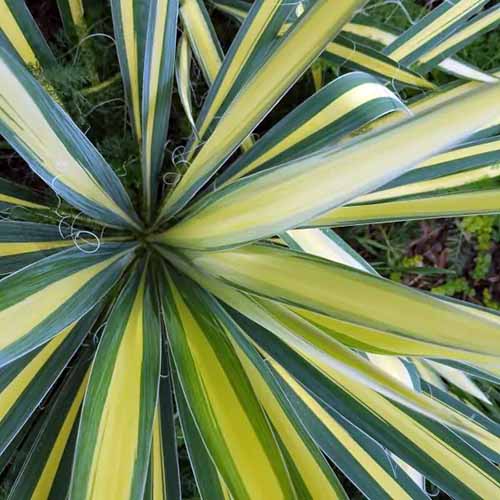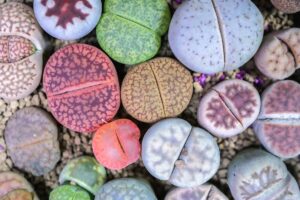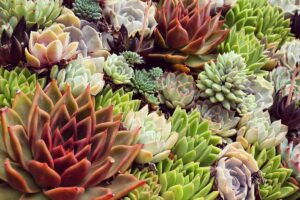When most people hear the word “container,” they don’t usually think of freedom. But when it comes to growing yuccas, a container represents almost limitless potential.
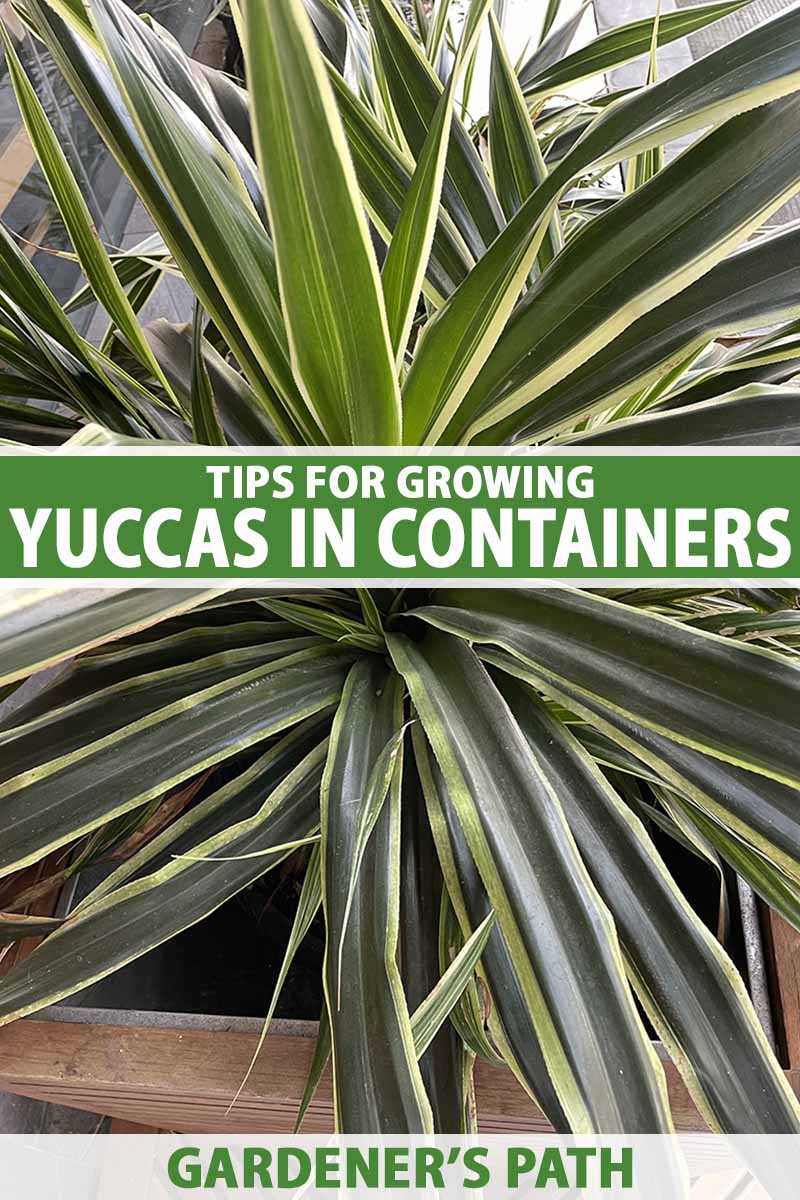
We link to vendors to help you find relevant products. If you buy from one of our links, we may earn a commission.
With the right container, you’re free to put species of Yucca in places where their in-ground brethren could never be, such as on a patio, a porch, or even somewhere indoors.
And with the proper light exposure, ambient climate, and cultivation practices, you can help them live long and happy lives.
But it takes some specialized know-how to successfully grow yuccas in pots, planters, and the like… and that’s where we come in.
From choosing a container to proper placement and caring for the plant within, this guide has all the info necessary for growing these succulents in pots and planters.
Here are the specifics of what we’ll cover:
What You’ll Learn
A Yucca Primer
The 51 currently-accepted species of Yucca belong to the Asparagaceae family alongside a grab bag of diverse flora such as spider plants, hyacinths, and my least favorite vegetable as a child, asparagus (which has since grown on me).
A very close relative of Agave, yuccas are heat-tolerant and drought-resistant succulents, hailing from the arid regions of North America, Central America, and Bermuda.
The genus as a whole is hardy in USDA Zones 3 to 11, with different species having varying tolerances for frost and cold temperatures.
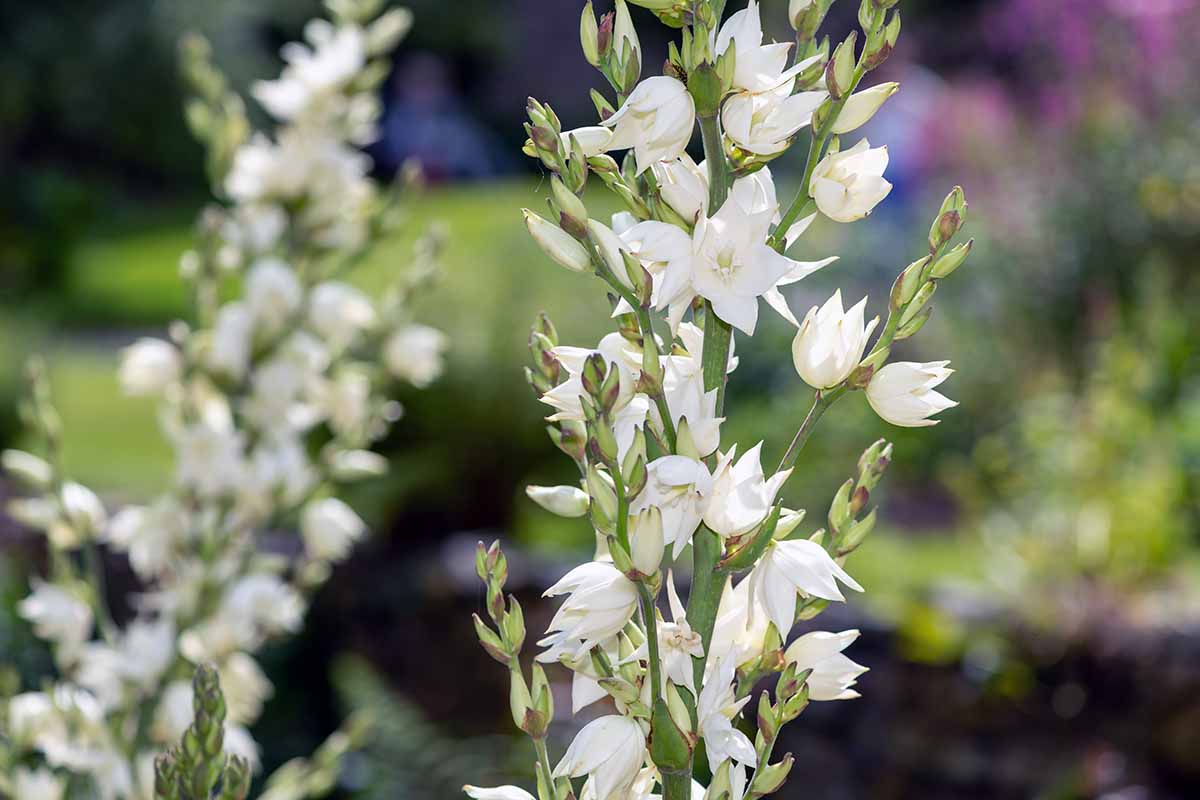
Resembling a tree or shrub in form, a yucca plant is recognizable by its tough, fleshy, sword-shaped leaves.
Arranged in a beautiful rosette, they come in shades of yellow to green to bluish-green, with some varieties flaunting stripes of yellow, white, or even red variegation.
Emerging from the center of the foliage are tall stems bearing clusters of bell-shaped flowers, which are typically white to cream-colored, some with tinges of purple.
Flowering typically occurs in spring or summer, although this can vary between species and locations.
Overall, different species come in a wide variety of heights and spreads – the smallest grows just two feet tall and wide, while the largest can reach 40 feet in height!
You can learn more about yucca plants and how to grow them in our guide.
Why Choose Container Growing?
So why put these succulents in containers? Let’s go over some reasons.
Accessibility
With tons of garden tasks that require stooping and bending on your to-do list, working with a plant that’s elevated in a pot can really help a hurting lower back.
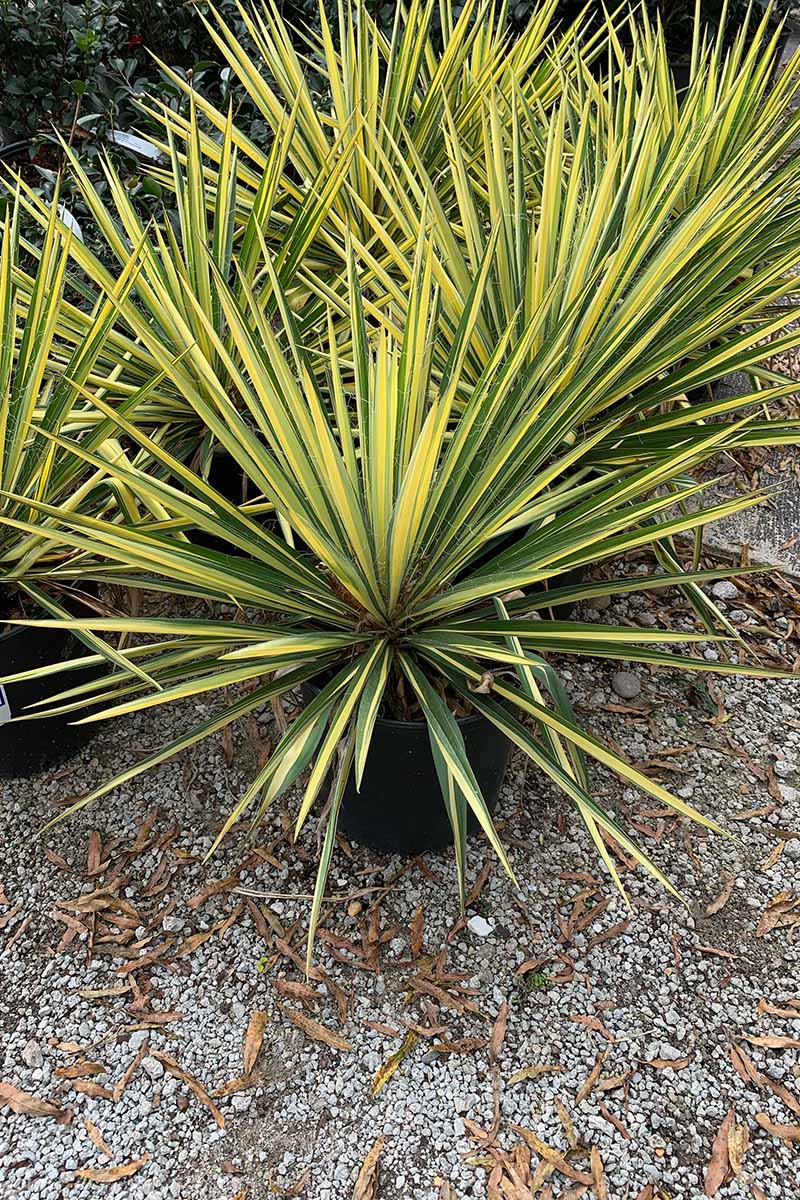
Also, I personally find it harder to ignore a plant in a container, making it more likely that I’ll check up on my yucca frequently, like a responsible green thumb should.
Flexibility
A container is essentially a portable planting site, so you have way more placement options for potted yuccas than in-ground specimens.
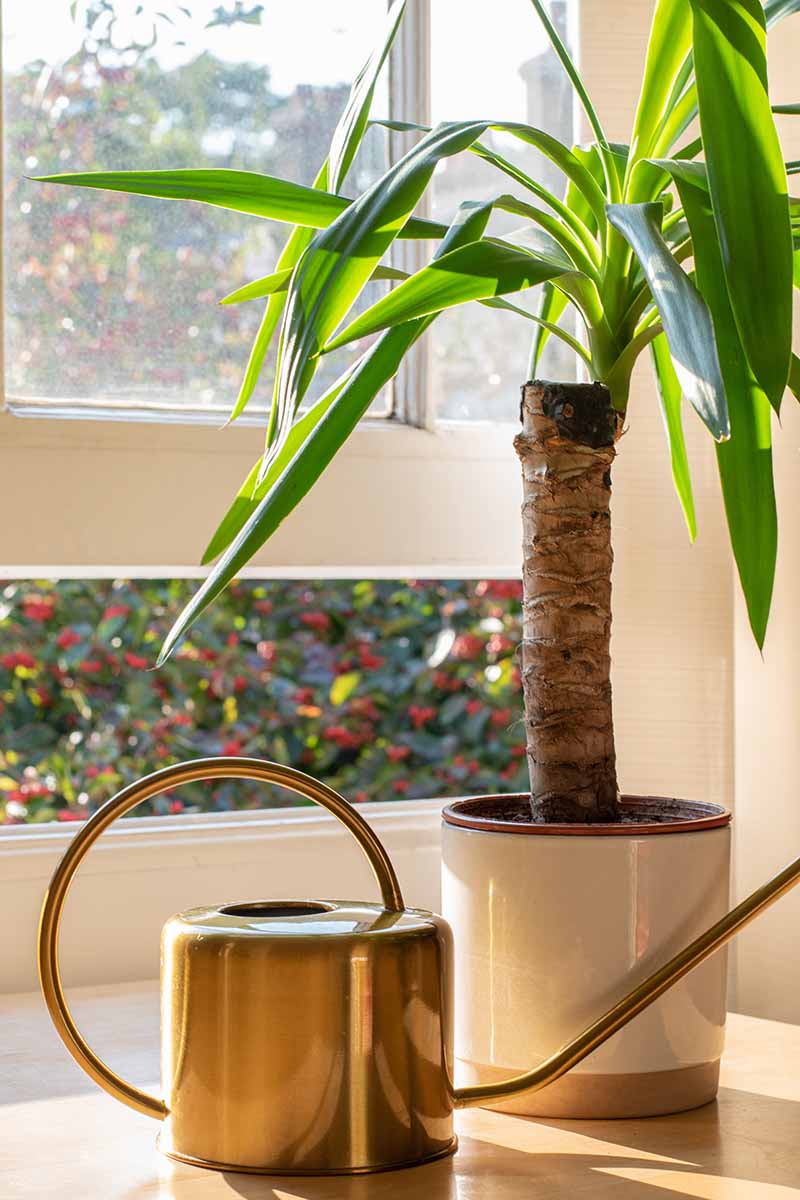
Not to mention that they’re way less of a hassle to move or transplant.
If you want to move an in-ground plant, you gotta dig it up, dig a new hole, gently maneuver the plant into its new hole, and then baby it for a while until it reestablishes itself.
I’d rather just haul a pot around for a bit, thank you very much!
Style
First and foremost, a container should be functional. But once function is taken care of, you’re able to go nuts on aesthetics, which can’t be said for plain ol’ garden soil.

Shape, material type, color, design… a pot can be “jazzed up” in many different ways. Plus, a pretty container can be reused long after the plant within is gone.
Choosing a Variety
First things first, you should decide what kind of yucca you want to grow.
Consider size, form, color, and hardiness based on your needs, preferences, and your garden’s hardiness zone – if you’re putting the plant outside.
If you need some help in picking a fabulous variety, give our yucca roundup a read.
Y. filamentosa, aka Adam’s needle, is suitable for cultivation in Zones 4 to 10. It grows to a mature height and spread of two to four feet in ideal conditions.
Showy white flowers are long-lasting and attract hummingbirds and butterflies.
You can find Adam’s needle in #2 and #3 containers available at Nature Hills Nursery.
Or if you prefer a variegated option, Y. filamentosa ‘Color Guard’ features creamy-yellow leaves, edged in green.
‘Color Guard’ is also available from Nature Hills Nursery in #2 and quart-sized containers.
Choosing a Container
Next, you’ll want to choose an appropriate container for your selected variety. And the first aspect of that to consider is the material it’s made of.
When it comes to durability, weight, cost, and appearance, each kind of container material comes with its own benefits and drawbacks. And there’s not necessarily a correct choice in material, either.
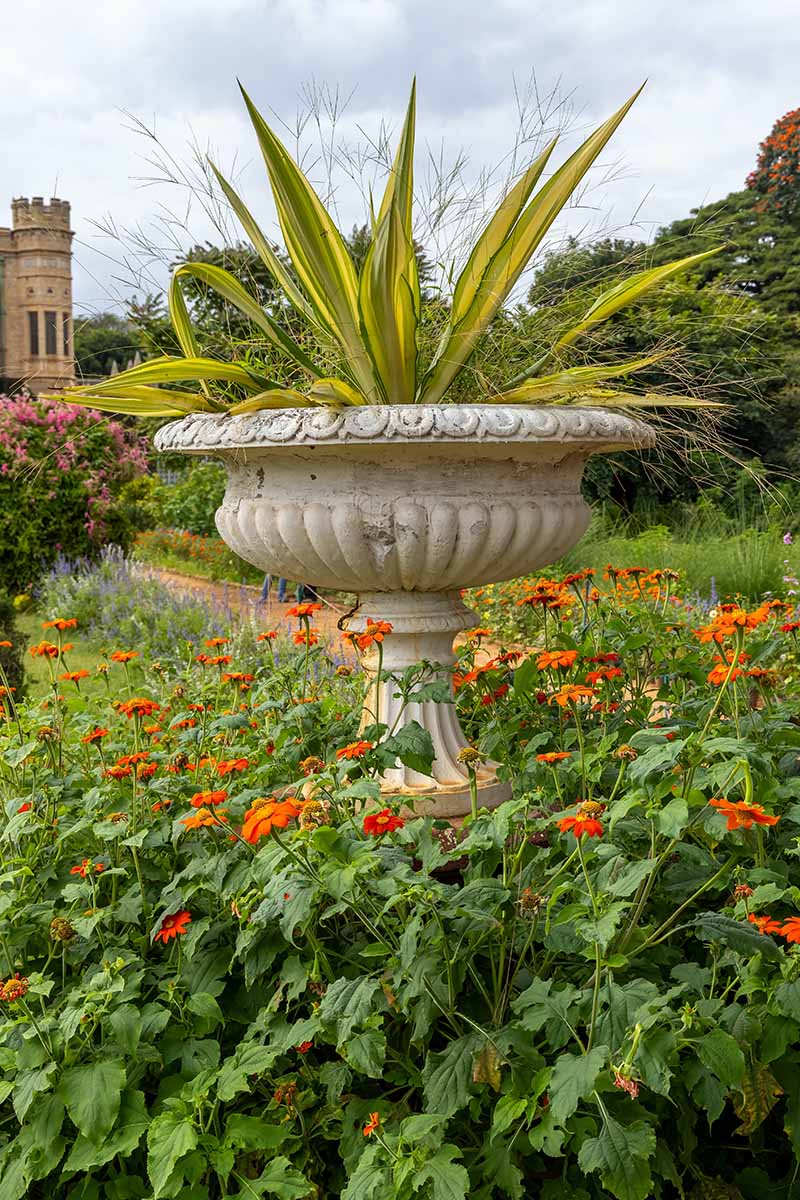
But since a yucca is far from a thirsty planting, using porous and quick-to-dry materials like concrete, terra cotta, and unglazed ceramic may prevent overwatering better than non-porous, moisture-retaining options such as fiberglass, metal, or plastic.
Choice of material aside, the best way of preventing too much moisture would by far be to utilize drainage holes at the bottom of containers.
That way, any excess water can trickle right out! If you’re planning to grow your specimen as a houseplant, make sure you select a saucer to place underneath the pot so it doesn’t make a mess.
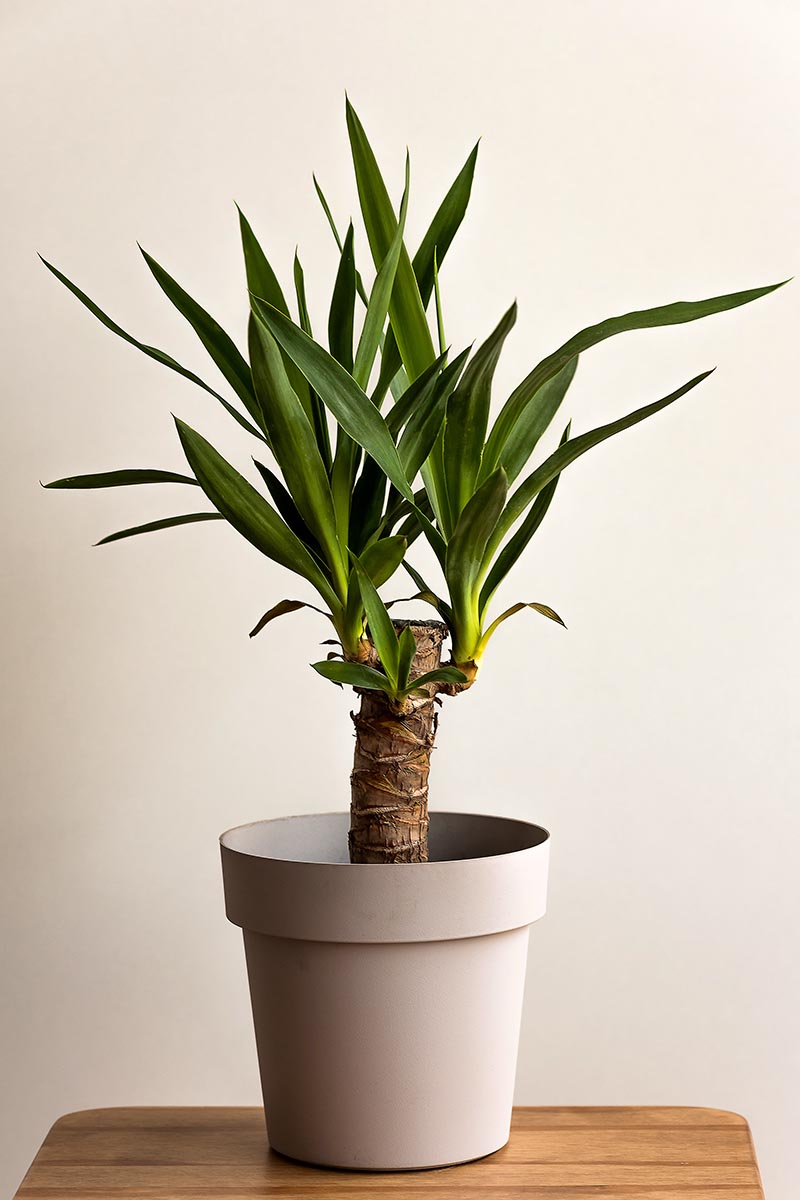
Size-wise, try to select a container that’s a few inches wider than the root ball.
The pot size will need to be proportional to the current height and spread of your chosen specimen, typically in the one- to three-gallon range to start.
If you’re dealing with a tree-like, top-heavy specimen, it’ll need a sturdy pot to keep it from tipping over, along with a wheeled trolley if you want to move it around.
But if you choose the wrong size, don’t fret – these plants can handle growing in pots that are a bit roomy or a bit cramped. They’re tough that way.
Potting Medium
Most yuccas prefer to grow in coarse, nutritionally poor, and acidic soil conditions – think the desert, the beach, or perhaps a litter box that you’ve spilled some Sprite in. Okay, maybe not that last one.
So to recreate such a barren medium, go with a potting mix fit for succulents or cacti, or you can make your own using a 3:1 ratio of landscape sand and peat moss.

If you’re looking for the former, Espoma offers a suitable organic mixture for succulents and cacti in four-quart bags on Amazon.
Once you’ve selected your media, take your container and fill it with your chosen media to about an inch below its brim. Now you’re ready to plant!
Planting and Placement
Before actually planting your yuccas, you should decide on where you’re going to put them. And whether your site is indoors or outdoors, you must provide the right climate and sunlight exposure.
A yucca that’s grown as a houseplant can actually tolerate a large temperature range of 45 to 90°F. Although a range of 60 to 75°F would be ideal, especially if you have other houseplants with similarly moderate temperature preferences.
Put your specimen in a spot where it can receive as much light as possible. If you’re in the Northern Hemisphere, a placement next to a south-facing window is perfect.
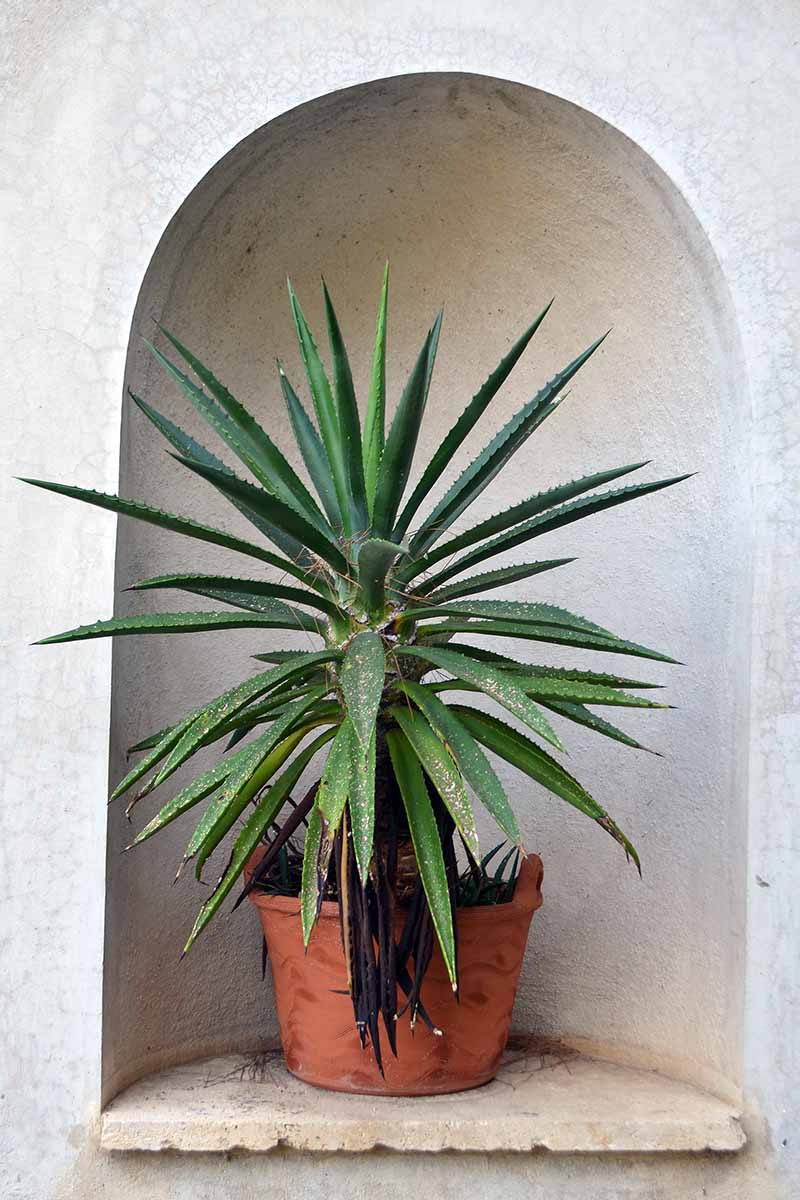
For outdoor specimens, make sure that your garden is in a hardiness zone that matches the climate requirements of your chosen species.
If your region is too cold for your yucca to survive outdoors year-round, then you’ll want to move the specimen indoors once temperatures drop below the tolerance of your chosen species.
In general, full sun exposure is best, unless your chosen variety requires more shade.
Make sure you also consider the safety of small children and pets when choosing a location, as the spiky tips of the leaves on some species have the potential to cause injury.
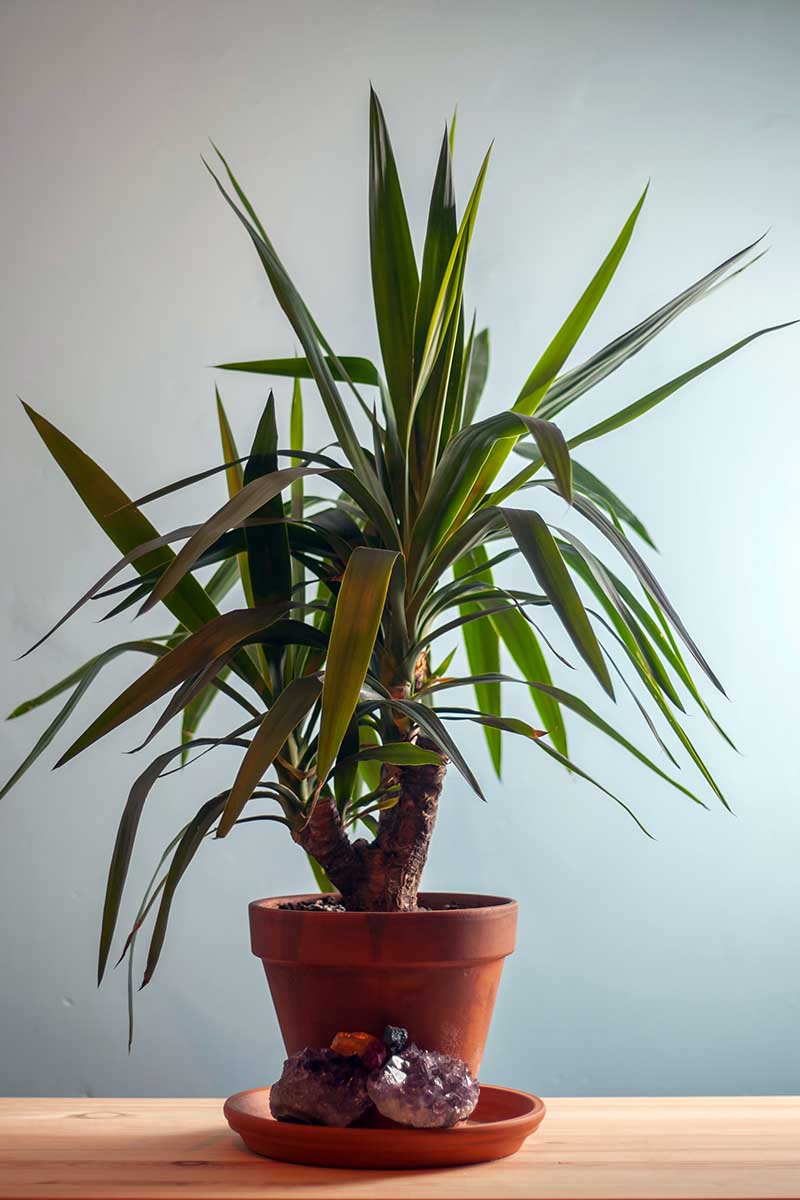
Once you have your spot picked out, dig a hole that’s about as deep as and a bit wider than your transplant’s root system, removing some of the potting mix in the process.
Lower the transplant in, backfill the hole with the dug-out mix, and then deeply water it all in to help with settling.
After your yucca is in place and potted-up, it’s all downhill from here – these plants are undemanding.
Container Care
Irrigation-wise, you’ll want to provide water whenever the majority of the surrounding soil is dry. If you stick a soil knife down to its hilt into the mix and it comes away dry, then it’s time to deeply water again.
Alternatively, you can use a moisture meter to take the guesswork out of it. In a sufficiently hot environment during the growing season, this could be as often as once a week.
Tip out any excess water from the saucer under the pot so that the roots don’t become oversaturated.
During the dormant season, a plant’s water needs are greatly reduced.
When it’s dormant, a yucca should be watered about once or twice a month, or enough to prevent its leaves from drooping, desiccating, or otherwise becoming negatively affected by a lack of moisture.
These plants don’t need much fertilizer, but a single, annual springtime application of a balanced fertilizer can help them grow without subjecting them to excess nutrients and fertilizer salt buildup.

Something like this 20-20-20 water-soluble plant food from Jack’s Classic would do the trick – it’s available in one-and-a-half-pound quantities at Amazon.
If you don’t want your plant to flower, then you should prune the flower stems before they bloom so that energy is redirected into more leaf growth. If you enjoy the blooms, you’ll need to prune the flower stems at the base once the blooms are spent.
Speaking of pruning, you’ll also want to remove any dead, damaged, or diseased tissues as soon as you happen to see them. If you don’t like the “skirt” look of the drooping lower leaves of some species, then those can be removed in one go at the beginning of every spring.
Unless a specimen becomes severely root bound within its container, you don’t have to worry much about repotting, since most yuccas can grow in the same container for many years without needing to change homes.
When you do decide to repot your plant, choose a container one or two sizes larger than the existing pot.
A Yucca in a Container: It’s a No-Brainer!
If you’re wrestling with whether you should put this succulent in a pot or not, let me make that call for you – yes, you absolutely should!
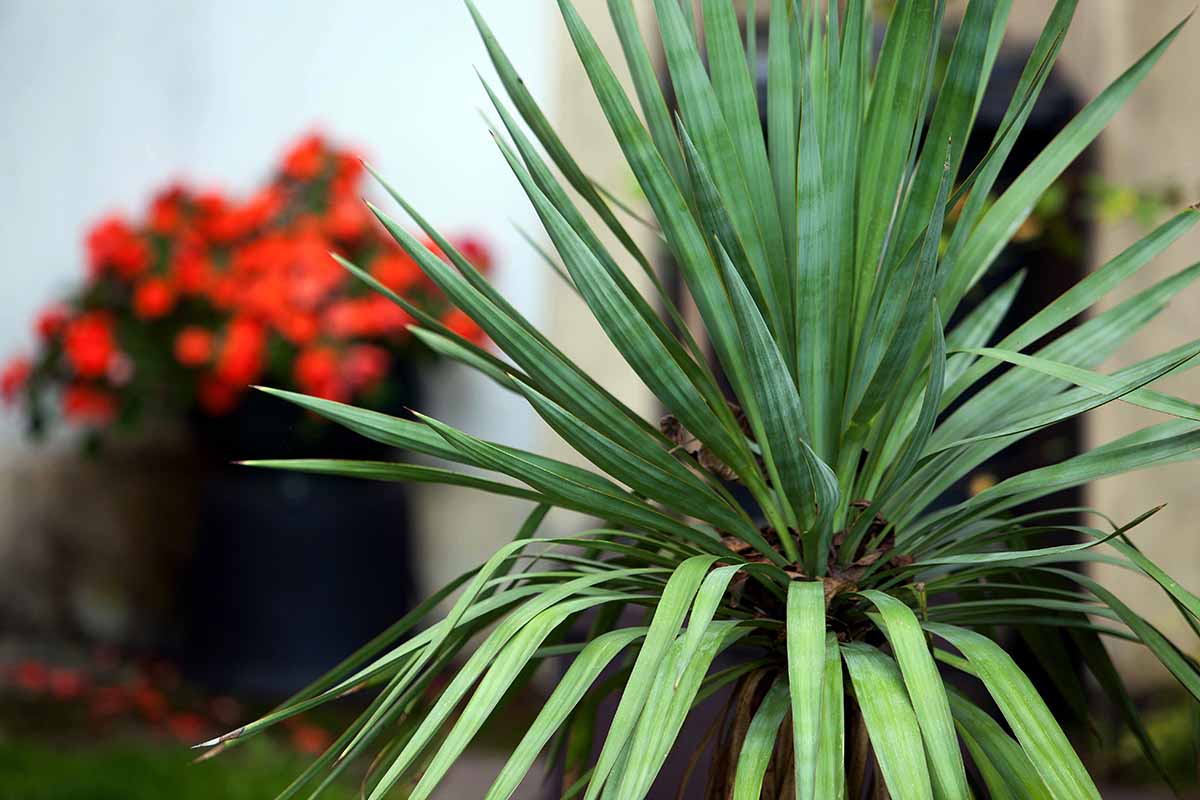
A greater ease of movement, more placement opportunities, and extremely aesthetic possibilities for containers. What more could you want?
Any of your burning questions left unanswered? Have some wisdom of your own to share? The comments section below awaits your thoughts.
Need more yucca growing tips? We’ve got you covered:

